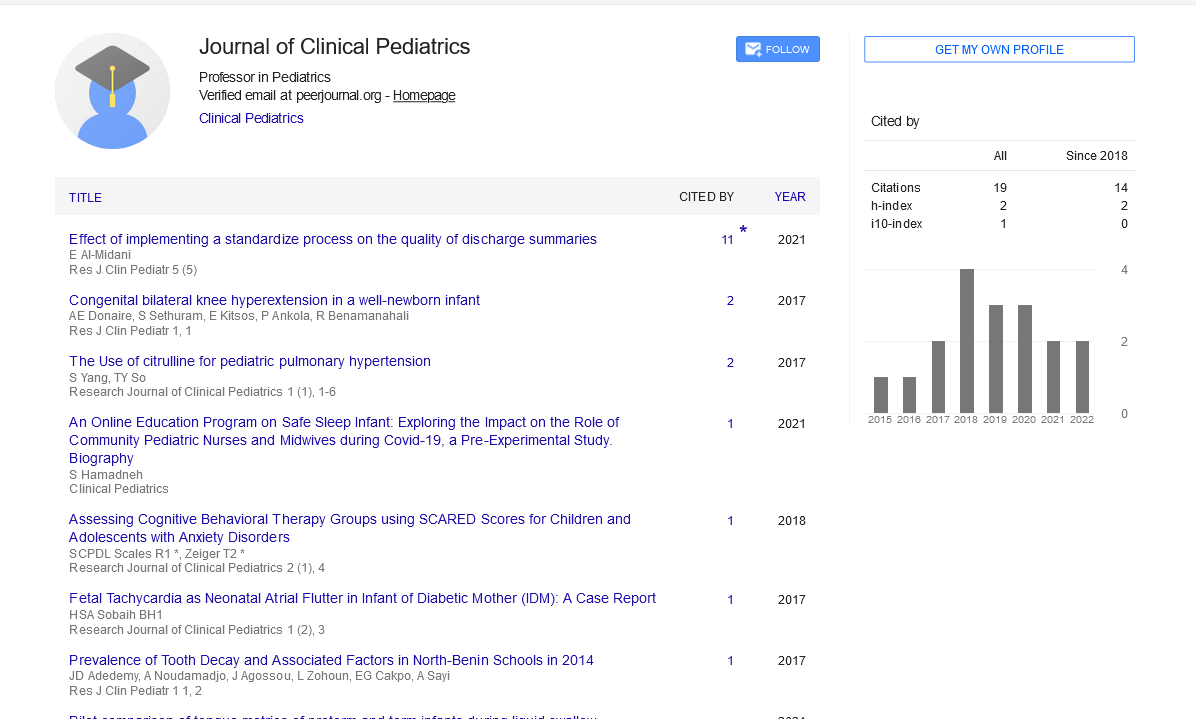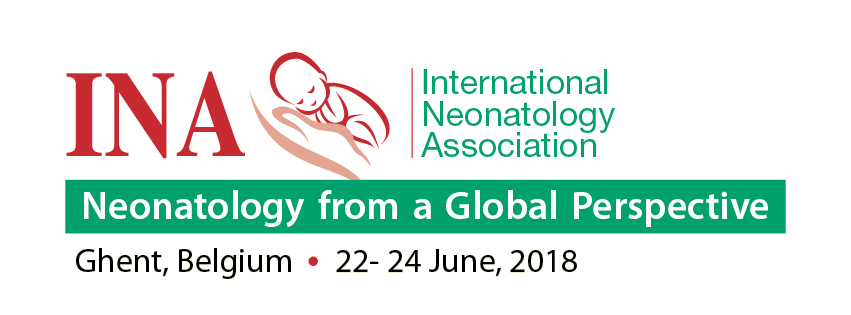Opinion Article, Res J Clin Pediatr Vol: 7 Issue: 2
Assessing Pediatric Endocrinology and Its Mechanisms in Childhood Hormonal Regulation
Erwin Hwang*
Department of Radiology, Yonsei University, Gyeonggi-do, Republic of Korea
*Corresponding Author: Erwin Hwang
Department of Radiology, Yonsei
University, Gyeonggi-do, Republic of Korea
E-mail: Erwin_hwang@yu33.kr
Received date: 22 May, 2023, Manuscript No. RJCP-23-105502;
Editor assigned date: 25 May, 2023, PreQC No. RJCP-23-105502 (PQ);
Reviewed date: 08 June, 2023, QC No. RJCP-23-105502;
Revised date: 15 June, 2023, Manuscript No. RJCP-23-105502 (R);
Published date: 22 June, 2023, DOI: 10.4172/Rjcp.1000143
Citation: Hwang E (2023) Assessing Pediatric Endocrinology and Its Mechanisms in Childhood Hormonal Regulation. Res J Clin Pediatr 7:2.
Description
Pediatric endocrinology focuses on the study of hormonal regulation and the intricate mechanisms governing growth, development, and overall health in children. Hormones play an essential role in maintaining the balance and coordination of various physiological processes. The endocrine system consists of glands that produce and secrete hormones into the bloodstream, which act as chemical messengers to regulate bodily functions. In children, the endocrine system plays a vital role in growth, metabolism, hormonal development, bone health, and overall maturation. Key glands involved in pediatric endocrinology include the hypothalamus, pituitary gland, thyroid gland, adrenal glands, pancreas, and gonads.
Hormonal regulation in children involves a complex interplay of various feedback loops and signaling pathways. The hypothalamus, located in the brain, acts as a central regulator by producing and releases the hormones that stimulate or inhibit the release of hormones from the pituitary gland. The pituitary gland, often referred to as the "master gland," secretes numerous hormones that control the activities of other endocrine glands. Hormones from the pituitary gland then act on target organs or tissues to initiate specific physiological responses.
Growth Hormone (GH) plays an important role in childhood growth and development. It is primarily secreted by the pituitary gland in response to the hypothalamus-released Growth Hormone-Releasing Hormone (GHRH). The hypothalamus also produces Growth Hormone-Inhibiting Hormone (GHIH), also known as somatostatin, which regulates GH secretion. GH acts on the liver and other tissues to stimulate the production of Insulin-like Growth Factors (IGFs), which promote growth and development in bones and tissues.
Thyroid hormones, primarily Thyroxine (T4) and Triiodothyronine (T3), play an essential role in regulating metabolism, growth, and development in children. The hypothalamus releases Thyrotropin- Releasing Hormone (TRH), which stimulates the pituitary gland to produce Thyroid-Stimulating Hormone (TSH). TSH then acts on the thyroid gland, stimulating the production and release of thyroid hormones. Feedback mechanisms involving T3 and T4 regulate the secretion of TRH and TSH to maintain thyroid hormone levels within a narrow range.
The adrenal glands, located above the kidneys, produce various hormones essential for stress response and salt and water balance. The hypothalamus releases Corticotrophin-Releasing Hormone (CRH), which stimulates the pituitary gland to produce Adreno-Corticotrophin Hormone (ACTH). ACTH acts on the adrenal glands, triggering the release of cortisol, aldosterone and adrenal androgens. These hormones play a vital role in energy metabolism, fluid balance, and pubertal development.
Genital development in children involves the interplay of hormones from the hypothalamus, pituitary gland, and gonads (testes in males and ovaries in females). Gonadotropin-Releasing Hormone (GnRH) from the hypothalamus stimulates the pituitary gland to release Luteinizing Hormone (LH) and Follicle-Stimulating Hormone (FSH). In males, LH acts on the testes, promoting the production of testosterone, while FSH supports sperm production. In females, LH and FSH regulate the menstrual cycle, ovulation, and estrogen and progesterone production.
Hormones exert their effects on target tissues by binding to specific receptors present on the surface or within cells. This hormone-receptor interaction triggers a series of intracellular signaling events, leading to the activation or inhibition of specific genes and the production of proteins that mediate the hormonal response. These mechanisms ensure precise control and coordination of physiological processes in the body.
Imbalances or dysregulation of hormonal pathways can lead to various pediatric endocrine disorders. Examples include growth hormone deficiency, hypothyroidism, hyperthyroidism, adrenal insufficiency, precocious puberty, and disorders of sexual development. Accurate diagnosis through comprehensive medical history, physical examination, and specialized laboratory tests is essential for effective management of these conditions.
Conclusion
Pediatric endocrinology unravels the intricate mechanisms involved in hormonal regulation during childhood, playing an essential role in growth, development, and overall health. The hypothalamus, pituitary gland, and other endocrine glands orchestrate a delicate balance of hormones, ensuring optimal functioning of various physiological processes. Understanding the mechanisms of pediatric endocrinology not only sheds light on normal growth and development but also aids in the diagnosis and management of hormonal disorders in children. Ongoing studies and advancements in this field continue to expand knowledge and improve the care provided to children with endocrine disorders.
 Spanish
Spanish  Chinese
Chinese  Russian
Russian  German
German  French
French  Japanese
Japanese  Portuguese
Portuguese  Hindi
Hindi 
